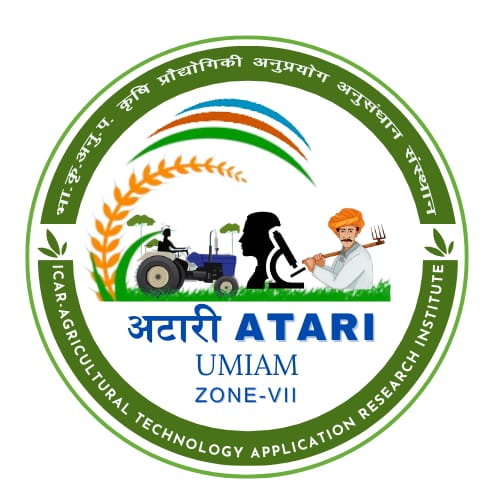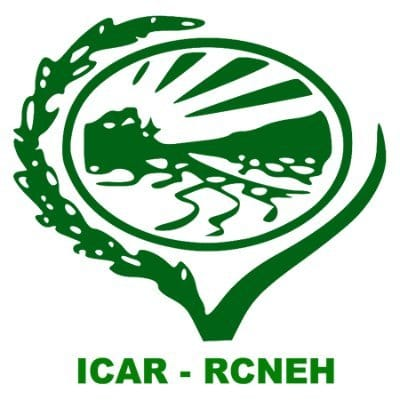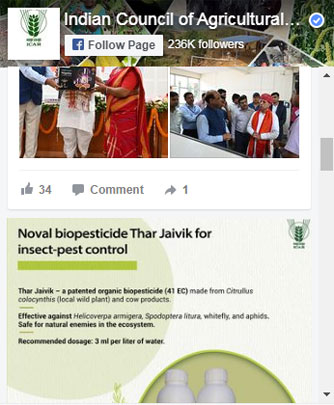
कृषि विज्ञान केंद्र, मोन Ngangching Road, Aboi-798603, Nagaland





Impact Stories:
1. Farmer testimonials: Real-life stories and testimonials from farmers who have benefitedfrom your respective KVK’s technologies and practices. Include photographs and personalnarratives to highlight the practical impact of the institute’s work.
Impact of Kuroiler Rearing for Improving Backyard Poultry
Introduction : Poultry farming is an attractive and significant source of generating income for small scale farmers especially in rural areas and villages. It plays a vital role in fulfilling the daily needs of meat and eggs. But the farmers with local breeds of chicken lacks behind in both meat and egg production. Kuroiler is a dual-purpose chicken breed giving more benefits in terms of meat, eggs, faster growth, ease of management and hardiness compared to the local breed. KVK Mon provided 10 farmers with 10 nos. Kuroiler chicks each along with feeds for a week in Totok Chingha village. The main objective of this was to test the technology in rural area.
Why Kuroiler chickens• Dual Purpose.• Suitable for village environment.• Faster growth.• More meat and egg production.Initially farmers were trained and chicks along with feeds were provided to them. After rearing the birds for four months the following results were obtained Average body weight at 1 month interval.
Sl.No Age(Months)Local Breed Weight (g)Kuroiler Weight (g)
1.One185.55348.902.
Two 459.87854.733.
Three 985.001670.004
Four1468.652890.00 Average egg production.
Sl. No Traits Local Breed Kuroiler
1.Age at first egg laying (days).212.15172.802.Average egg weight. (g)36.2654.04
Economics
Sl. No Parameters Local Breed Kuroiler
1.Cost of rearing 10 chickens for 5 months. (₹)2,8005,9002.
Income from selling meat after 5 months. 10 chicken. (₹)6,65013,4403.
Income generated from selling eggs. (₹)-Nil-•Farmers rarely sell local eggs in the villages.200•Less eggs are sold and consumed more by the farmers themselves.
Conclusion•It maybe concluded that introducing Kuroiler chickens to the farmers have helped the farmers in Mon district to generate more income from both meat and eggs and they hold the key to better livelihoods increasing both income and nutrition.•Rearing of kuroilers have become more popular in the district and had a remarkable impact on women too because it requires less hard labour. And most of the small scale and marginal farmers
intend to practice in a larger scale as it is of considerably low investment.
Impact Stories
Farmer testimonials: Real-life stories and testimonials from farmers who have benefited from your respective KVK’s technologies and practices. Include photographs and personal narratives to highlight the practical impact of the institute’s work.Farmers of Mon district were cultivating tomato and chillie for past many years but due to non availability of improved varieties the productions were very poor and their economic returns were very low. With a view to increase productivity of the tomato and chilli and to boost their economic returns, KVK Mon introduced high yielding and diseases resistant varieties of tomato Arka Samrat, Arka Ahed and chilli varieties such as Arka Meghana, Arka Khyati, Okra variety like Arka Anamika, Cauliflower variety KTH 301, Cabbage variety Pusa Mukti etc were introduced in the district following all recommended package of practices. Farmers of the district realized good harvest and income from the crops. Seeing the result and income from the new varieties and the technologies provided by the KVK, they are very confident that the economy can be greatly enhanced. The farmers are also confident that KVK can bring about a great change in making the district self-sufficient through introduction of other improved and high yielding crop varieties. Case StudySeason (Kharif/Rabi/Summer) : RabiName of KVK KVK MonCrop and Variety Lentil var. Pusa Ageti L-4717Name of farmer & Address Leiya, Choknyu village Background information about farmer field Many farmers of Mon district mostly practise mono cropping of rice (WRC) and leave the land fallow which leads to low income from single crop. Therefore, with the objective to improve the economic return of the farmer by cultivating second crop after rice, introduction of high yielding crop variety, field demonstration on Lentil variety Pusa Ageti L-4717 was conducted in the rice field (after harvesting rice) of Leiya, a farmer in Choknyu village. The farmer was provided with seeds and other critical inputs and adopted all recommended package of practices. She obtained a yield of 9.4 Q/ha which was sold at Rs. 12000/-. per quintal and earned gross income of Rs. 112800/-. The total cost of cultivation including cost of seed, labour cost and other inputs was calculated at Rs. 51780/- per ha. Thus, she earned net profit of Rs. 61020/- per ha. A control plot in another farmers field was also maintained where lentil was grown without any improved package of practices. On an average, the farmers practices produced only 7.8 Q/ha and earned a net income of Rs. 32055/ha.Details of technology demonstratedImproved Lentil variety Pusa Ageti L-4717 was introduced and followed all recommended package of practices like line sowing, proper spacing, thinning, plant protection measures, irrigation, etc. Institutional Involvement KVK Mon provided seeds, other critical inputs like manures, biofertilizers etc. to the farmer. KVK scientists also provided technical guidance to the farmer for all operations, starting from crop sowing till harvesting and also conducted training and field days on the adoption of improved variety for achieving higher benefits. Regular monitoring and supervision was taken up in the farmer’s field during the cropping season.Success Point The farmer was practicing only mono cropping of rice after which she leave the field fallow (about 5 months) till the next rice season. With the adoption of second crop after rice, the farmers saw an increase in income from the same plot of land. Also, adoption of recommended practices and proper management of the crop resulted in higher yield leading to better income as compared to non-adoption of recommended practices. After convincing that lentil is a good for improving his income Leiya is now planning to increase area under lentil in the coming year. The success of Leiya has inspired other fellow farmers and farmers of the neighbouring villages to cultivate lentil crop. Farmer Feedback The farmer was very satisfied with the performance of the variety and also she
was quite happy in getting additional income from the second crop. If seeds are made available she wanted to continue cultivating lentil.
Outcome Yield (q/ha) 9.4 –
Potential yield of variety/technology 15-18
District average (Previous year) 9.92
State average (Previous year) 11.37
Performance of technology vis-a-vis Local check (Increase in productivity and returns)
Demonstration
Specific Technology Yield (q/ha) 9.4
Gross cost (Rs/ha) 51780
Gross income (Rs/ha) 112800
Net income (Rs/ha) 61020
B:C ratio 2.18
Farmer practice
Yield (q/ha) 7.8
Gross cost (Rs/ha) 49845
Gross income (Rs/ha) 81900
Net income (Rs/ha) 32055
B:C ratio 1.6
Increase 17.02
